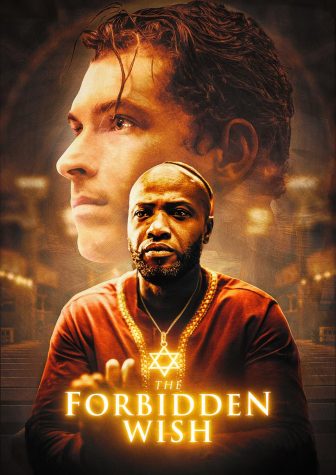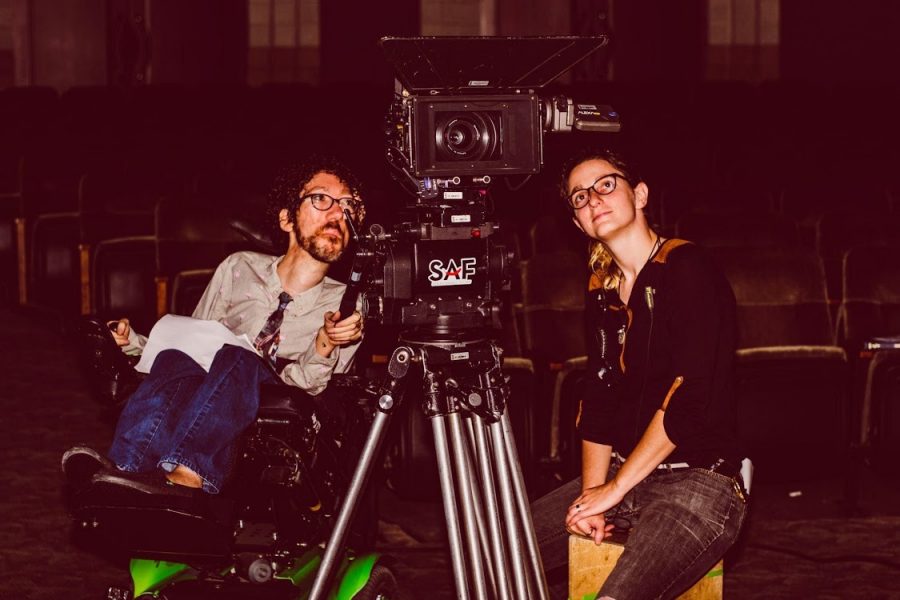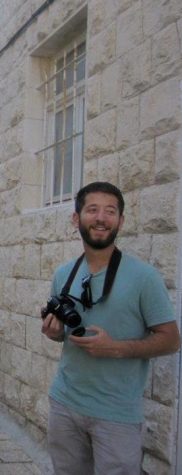Filmmaker chooses St. Louis as backdrop for characters to debate the Jewish faith
Published May 20, 2021
The St. Louis Cardinals haven’t had many slumps over the last decade.
Filmmaker Michael Carnick has.
Born with a rare condition similar to muscular dystrophy that keeps him confined to a wheelchair, Carnick, in 2012, was forced to spend about six weeks in a Los Angeles hospital and then a half-year rehabilitating himself, which left depressed to the point where he contemplated suicide, he said.
But he felt motivated enough to begin writing a screenplay in which Isaac, a young, white Jewish man, meets an Ethiopian-Israeli rabbi named Nate, in a synagogue in St. Louis, though that is not explicitly stated.
Isaac discusses a visit to Busch Stadium and his love for its featured baseball team, the Owls. (Carnick said he was not able to get clearance to use the Cardinals’ name.)
That screenplay became a film, “The Forbidden Wish,” which premiered April 6 and is available for rent on various streaming services. The two characters spend much of the movie arguing about Judaism, including a discussion about the Jewish people’s larger struggle and their exodus from Israel.

He chose St. Louis as the setting for the film because he saw Busch Stadium and the Cardinals as iconic, and the bird team name “made for a good metaphor for the diaspora,” Carnick told the Jewish Light.
These days, Carnick said, “knock on wood, I’m fine.”
“Making this film was very therapeutic for me because…whenever you make art about a painful subject matter, it really helps emotionally,” said Carnick, 39, who lives in San Diego and studied theater and dance at University of California San Diego and in 2005, won first place at the 50th anniversary of the Samuel Goldwyn Writing Awards, a prestigious competition open to all University of California students.
The film is set in a synagogue the day before Yom Kippur. Isaac encounters Nate as the rabbi is practicing his sermon. He tells the rabbi that he has just returned from Israel, where he buried his father. He then asks the rabbi to recite the Mourner’s Kaddish. The rabbi, understandably, assumes that Isaac is asking him to do so for his dad, but the young man says no, “For me.”
“I have a proposition for you,” Isaac tells Nate. If Isaac can prove by the time Nate has to close the synagogue that Isaac is dead, then Nate will agree to recite the Mourner’s Kaddish for him.
The two characters spend the rest of the film in a philosophical dialogue on what it’s like to be a Jew of color, Israel, death and homosexuality, among other topics.
Carnick grew up attending a Jewish day school at a Reform synagogue in San Diego.
But as an adult, he was not particularly religious.
For the film, which he shot at Congregation Beth Israel in San Diego, “I had to do a lot of research about the more observant parts of” Judaism, he said.
Carnick views the two characters in the film as parts of himself: one that is disillusioned with Judaism, the other who is devout.
Plus, “the Western privilege, comparing that with the African-born Israeli…I thought that would be a good contrast,” Carnick said.
Carnick had planned to visit Israel to work on a documentary about San Diego’s sister city, Sha’ar HaNegev, but had to postpone the trip because of the COVID-19 pandemic.
In a “much better place” mentally and physically, Carnick was looking forward to his visit to the Jewish State, in spite of the difficulties of traveling in a wheelchair, he said.
He still hopes to visit and work on the film — and feels even more urgency given the chaos surrounding the battle between Hamas in Gaza and the Israeli Defense Forces in Israel, he said.
“It would be a big schlep,” he said, “but it’s worth it.”
















